To become successful in the art sphere, talent and expert technical skills will not always cut it. Nowadays, artists also need to understand how the Internet is changing the way people consume art. With an artist portfolio, you can present your work to a much larger audience than galleries and museums (although these channels are still important). Without a captivating art portfolio, it is almost impossible to stand out amongst such intense competition. For this reason, we will present you today with 20 art portfolio examples to inspire you. If you want to display your art, gain followers, and even sell your pieces, you should build an art portfolio website to make a memorable impression.
Why Do You Need an Art Portfolio Website?
Aside from representing your art, a visually appealing art portfolio will further interest your work. Moreover, it will attract critics as well, both of your art and you as an artist. That's why it is essential to see how other prominent artists present their work on the web and find inspiration for online portfolio designs. If you need more reasons to start an online portfolio, we recommend reading this guide on its benefits.
As you can quickly figure out, you need a friendly website builder and a versatile photography website template to feature your works and tell the world all it needs to know about you. If you want to know how to make a portfolio, read the final section of this article. If the technical aspects seem daunting, designing your website with a professional might be a good idea.
20 Art Portfolio Examples to Inspire Your Website
There are numerous fantastic art websites to get inspiration from, but we gathered 20 art portfolio examples that stood out the most. Visit each of them and note their best traits. Look at the art and pay attention to the websites' structure, design, pages, sections, etc. This exercise will help you present yourself and your art in the best light. So let's take a look together at the following eye-catching portfolio website examples!
1. Blu
Although his identity remains a secret, Blu is an artist who doesn't require any introduction. He is a renowned street artist who left an unforgettable mark all over the world. He is mostly expressing himself through large-scale murals that embody the spirit and the architecture of the city where he paints.
The signature style and motifs of his murals are humanoid figures that often convey a strong political message. By combining powerful imagery and stop motion animations, he also creates brilliant videos that he shares with his audience for free. Despite being sought-after by gallery owners and collectors, he refuses to do commercial work and stays very vocal against commercial art.
What to Learn from this Art Portfolio
This artist leaves a distinctive mark on everything he does. The same goes for his art website. His unique visual identity perfectly translates to his webpage design. Blu's online portfolio is creative and vibrant and reflects his work. His website gives his audience the perfect balance of fun and innovative design that creates an excellent setting for his work and personality.

2. Space Invader
Next on our list of brilliant art portfolio examples is Space Invader. Here we have a well-known street artist, or as some people might put it – a modern-day crusader. He derives his inspiration from the 90's video games of the same name. The artist is most famous for the ceramic pixel creatures he puts up all over the major cities. This way, he creates a global quest where people search for his art among urban landscapes.
"Rubikcubism" is another project that made this artist famous. Here he used Rubik's Cube patterns to create complex portraits and images. From pop icons to recreating famous paintings, Space Invader did it all.
What to Learn from this Portfolio Website
His web presence is as vibrant as his art. You can quickly locate his work using the map on his portfolio website. This map will show you that his Space Invader creature is slowly occupying the world (it even reached the bottom of the ocean). Besides the map, you can also see his works and learn more about the artist himself. The whole website design exhibits his signature style – bright colors and pixelated images; perfect for viewers in touch with the 80's aesthetic.
When you build an artist portfolio, don't forget to add an About page. In his About section, Space Invader answers some of his fans' most frequently asked questions in his whimsical, fascinating manner.
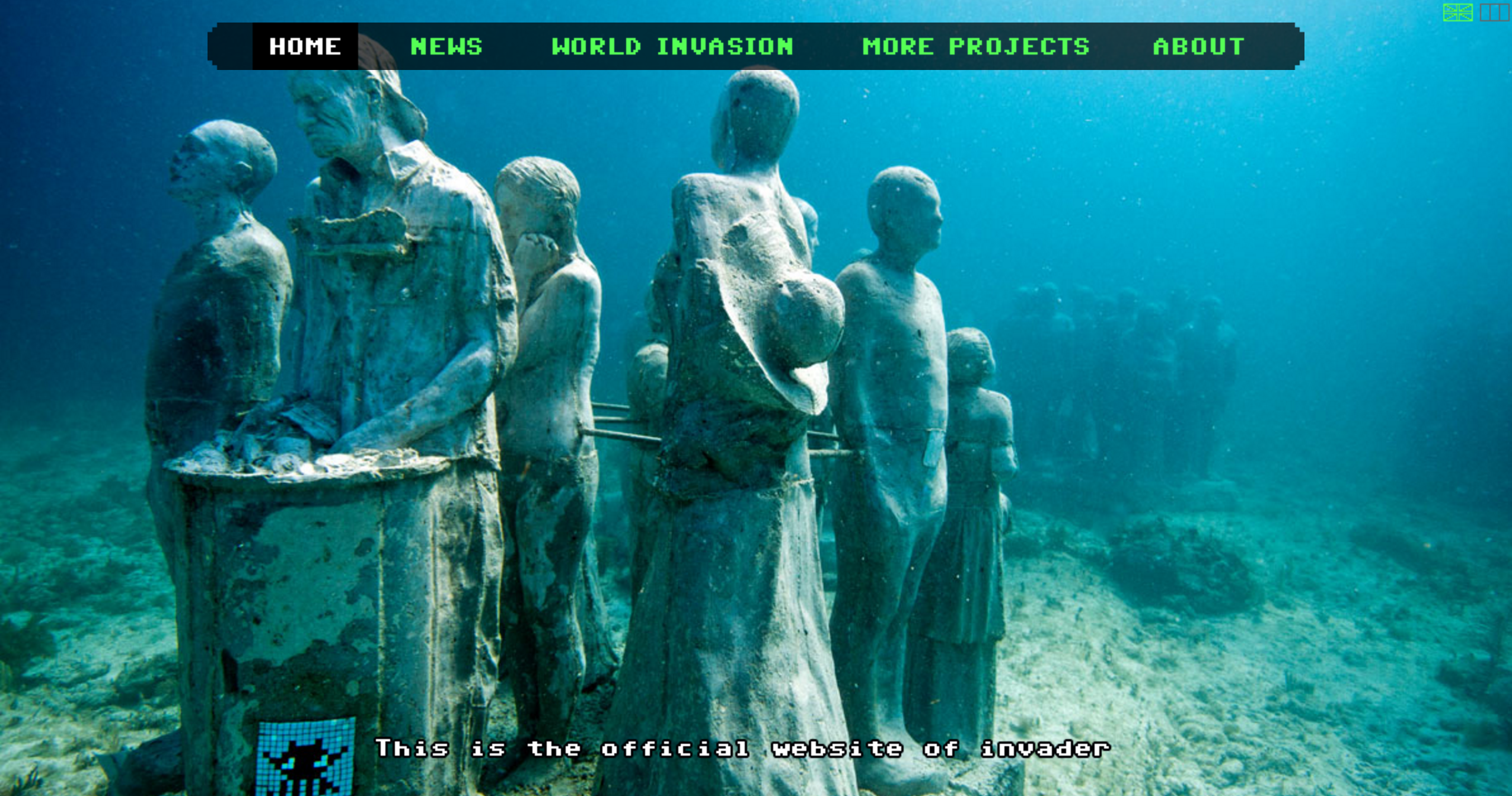
3. Os Gemeos
Os Gemeos is a street art duo from Sao Paulo, Brazil. Otavio and Gustavo Pandolfo are identical twins and creative partners who decorated many walls in numerous cities. They began painting graffiti on the streets of Sao Paulo during the late '80s and quickly became famous. Their early work presents powerful influences from American hip-hop, and they gradually started incorporating surreal elements from their dreams and themes from Brazilian folklore.
Nowadays, they are famous for their distinctive large-scale murals that feature variations of a yellow-skinned character, a recurring element in their masterful work. What is fascinating is that the figure first appeared in their dreams.
What to Learn from This Online Art Portfolio
You can see all of their beautiful work on their website. Os Gemeos' online portfolio is clean-cut and organized so that their colorful work remains at the center of attention. Their website design is easy on the eyes, and navigation is very intuitive. You can filter images based on various criteria or scroll down to enjoy their entire body of work.
As you can see, they have a Biography and a Contact Us page to tell their story and keep in touch with their fans. Another exciting web design elements are the customized social icons for Twitter, Facebook, and Instagram that you can find in the website's footer.
We discussed this before on a different occasion. Still, we will reiterate it now: having your artistic endeavors present across social media networks is crucial for all established and beginner artists. We will emphasize the importance of Instagram and its power to help musicians, painters, writers, and other artists bring their works in front of the world.
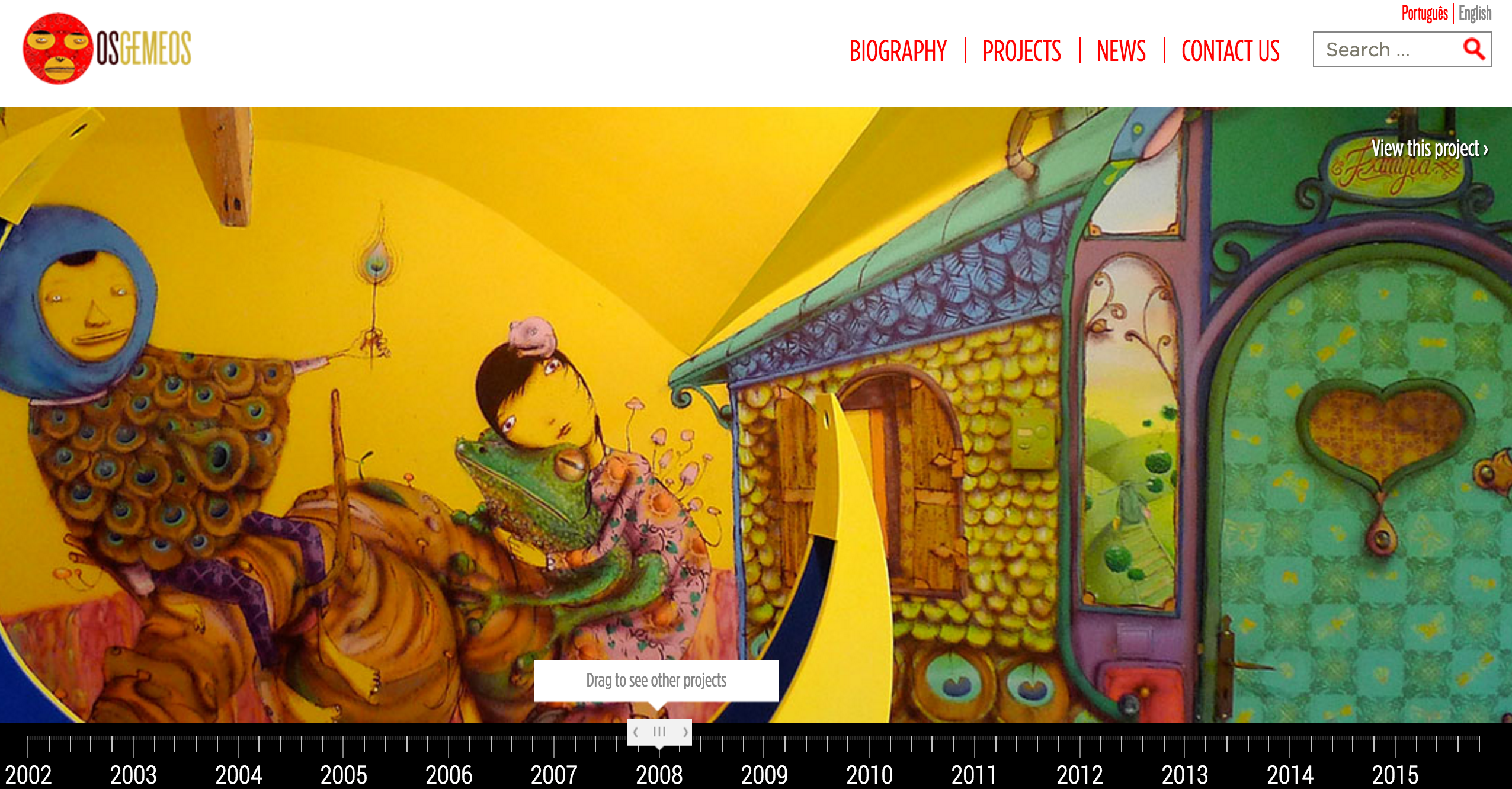
4. Jeff Koons
Jeffrey "Jeff" Koons is the next entry on our list of brilliant art portfolio examples. He is one of the most successful and most debated artists in the post-war era. It is hard to classify his work, but critics often describe his style as Neo-Pop or Post-Pop. Love him or hate him, one thing is sure – Jeff Koons has already left his mark on modern culture.
A quick look at his art website, and you can easily figure out he takes the time to create more incredible or controversial work. He is famous for taking banal objects from everyday life and transforming them into art installations.
Over the years, he has become the main topic of many heated arguments between art critics. Some say his work is mundane and blame him for bringing kitsch into modern art. On the other hand, some critics say his work is genius and praise him for successfully bringing mass culture to the art world. Either way, he held the world record for the most expensive work by a living artist sold at an auction.
What to Learn from this Artist's Portfolio
Surprisingly, his webpage has a minimalistic design and is very neat. Besides, the website is very user-friendly, and you can effortlessly browse through his portfolio and see details about his artwork.
What we like about this art portfolio website are its architecture and navigation. You can easily find his works to admire, learn about his past and current exhibitions, learn more about him from his biography, contact the artist, and learn more about his work by consulting the vast bibliography dedicated to his art by critics and experts.
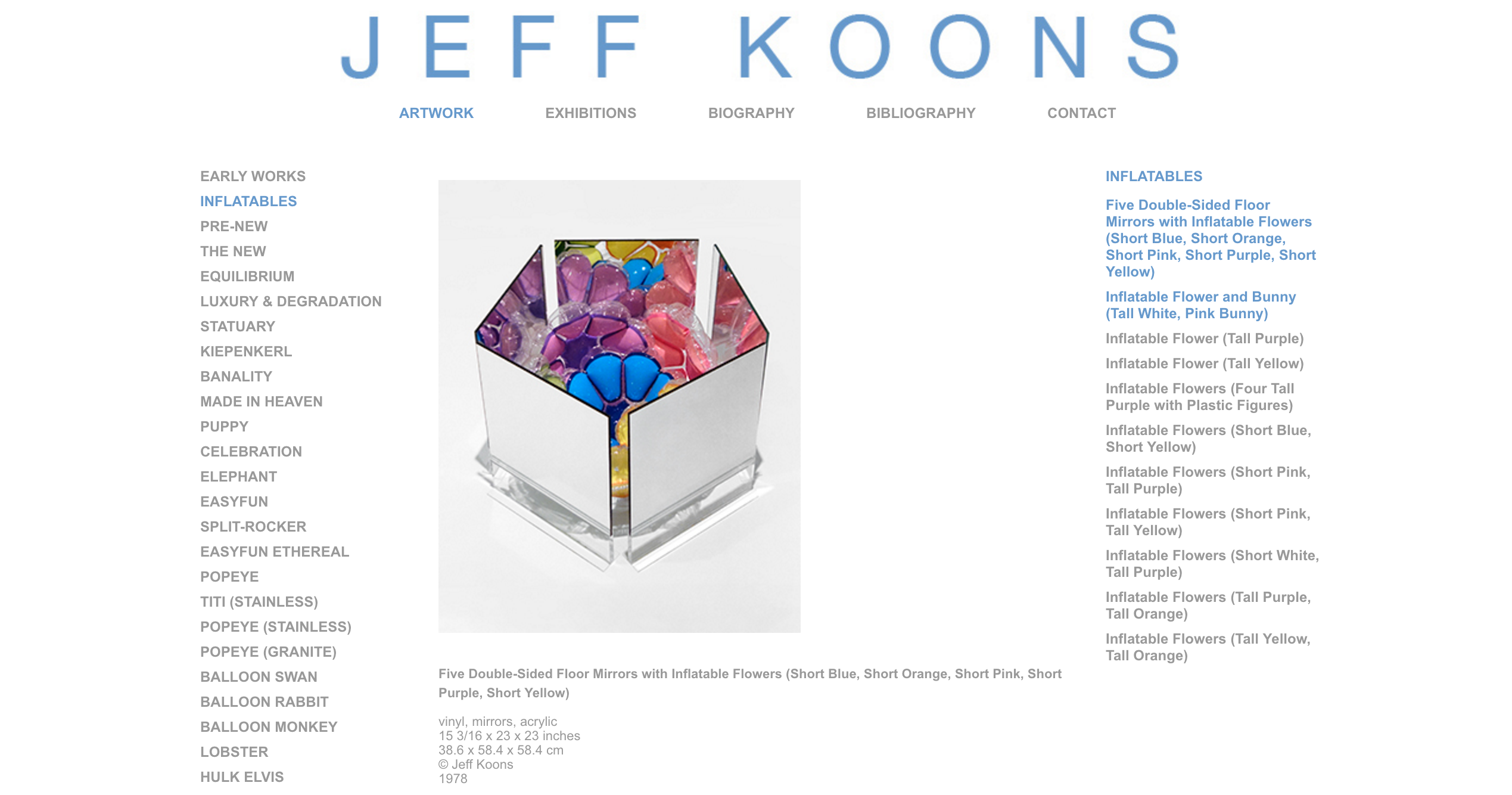
5. Gerhard Richter
Gerhard Richter is a German painter with a prolific career behind him. He began his work in the early '60s, and since then, he has enriched the art world with myriads of paintings that expand through different techniques and movements. Since the beginning of his career, his work has alternated between photorealistic and abstract paintings.
Richter's photorealistic paintings are famous for the blurring he applied to express the thought that artists can never fully reproduce the subject in its original form. There is always something lost in the transition from the model to the canvas.
Because of this effect, those paintings give away a sense of melancholy and gloom. On the other hand, his abstract work usually features bright and vibrant colors. Brushstrokes and paint layering are purposely visible, and he is both praised and criticized for this viewpoint. There is no doubt about it; Gerhard Richter is an artist that has demonstrated his skills through different art forms.
What to Learn from this Art Portfolio Example
That being said, it's clear why his online portfolio needs to be well organized. When it comes to design, his website is pristine and clean so that his extensive body of work can be in focus. The layout of the website lets you explore different portions of his art through organized sections, which allows you to get a unique perspective on the artist's portfolio as a whole.
One website feature that we appreciate the most is the diversity of languages available for international users. If you plan to build an artist portfolio to cater to worldwide fans, you should consider a website builder capable of helping you create a multilingual website. We recommend you to check out the Ucraft features, as our builder offers you much more than just the chance to build your artist portfolio in more than one language!
The website's Literature page is also an excellent resource for fans, art students, and critics to study Richter-related literature, essays, articles, and monographs.
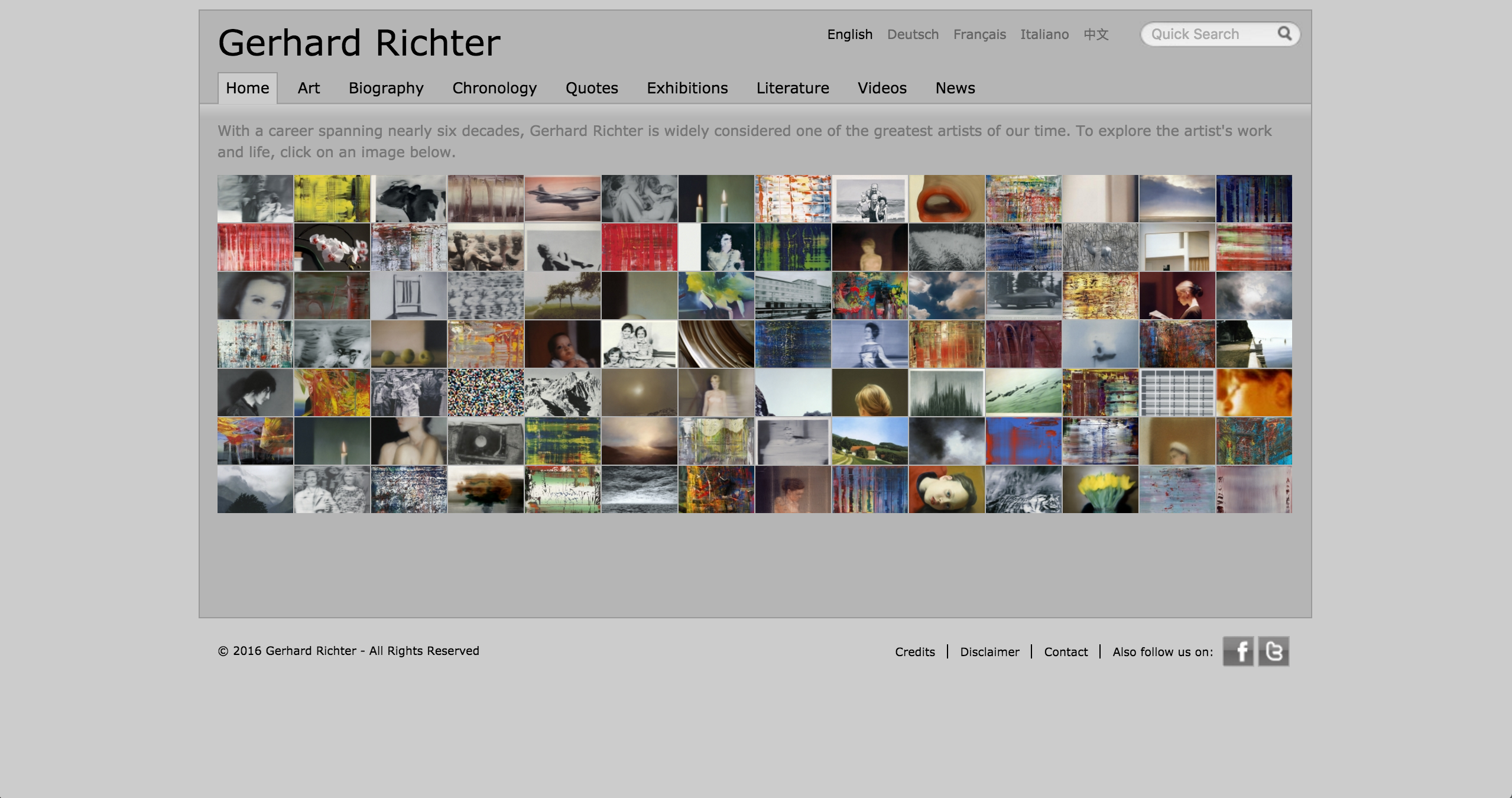
6. Peter Doig
This low-key and humble artist is one of the few genuinely excellent representational painters of today. His most recognizable works include exotic landscapes and Canada's frozen scenery from his childhood. A recurring element in his paintings is a floating canoe that perfectly captures moments of tranquility that the artist wants to convey.
Although he derives his inspiration from photographs, his work is often abstract and contains elements of magical realism. He is a critically acclaimed artist praised for his genuine creativity, something quite rare for an artist in the 21st century.
What to Learn from this Art Portfolio
His art website offers a refreshing and creative way of displaying artwork. Right away, on the home page, you can see his most famous work in a header slider. This way, his paintings become the focal point of his art portfolio, and they instantly mesmerize the viewer.
Of course, there is other information about the artist himself, like his exhibitions and awards. Still, if you want to enjoy his fantastic work, you can remove all those additional features by clicking on a button in the top right corner.
When you consider building an artist portfolio, you cannot ignore an essential part of an artist's life: selling the works. On the Peter Doig art website, you can easily select the works currently available for sale. The lesson here is that you need to find a website builder that allows you to add an online store to an art portfolio template so your fans can purchase their favorite pieces with a few clicks.
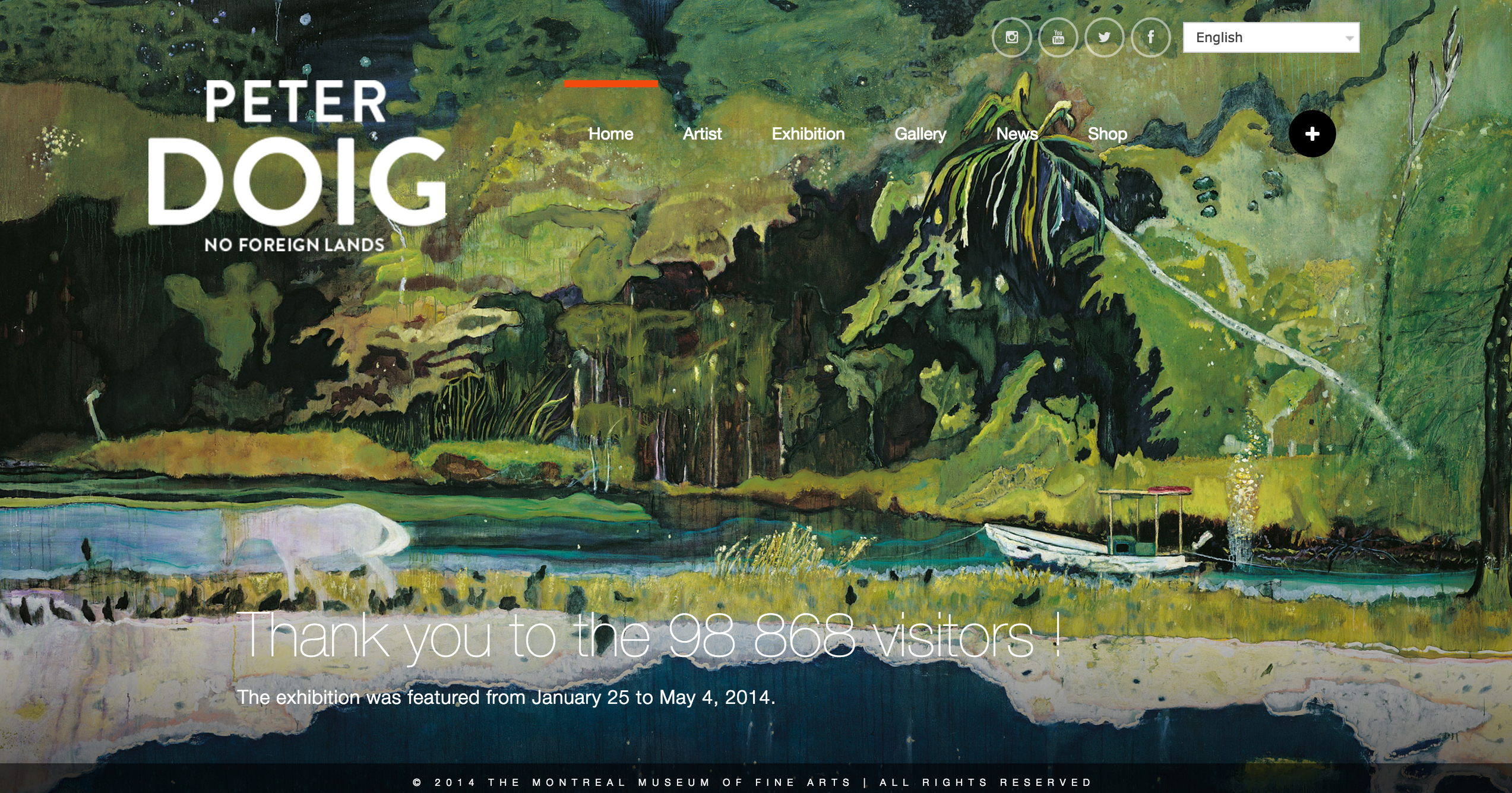
7. Banksy
You cannot have a list of most brilliant artist portfolio examples without mentioning Banksy.
While his identity remains a mystery even after all these years, Banksy transcended being a graffiti devotee and became a multidisciplinary artist and a fierce critic of Western society. He came a long way from his humble Bristol beginnings to worldwide notoriety, but his unique sense of irony remains intact.
His recognizable stencils and graffiti didn't gain popularity because of his style, but rather thanks to those pieces' powerful message. From the beginning of his career, he has been a nuisance to authorities, while art critics still can't reach a consensus regarding his work. The most crucial thing about Banksy is his loud and clear message. He "comments" on every controversial topic, and he's always anti-establishment and anti-war.
Banksy also criticizes racism and the act of turning a blind eye to injustice – not precisely popular topics in modern elite society. Besides graffiti, he directed a successful documentary, "Exit Through the Gift Shop," that premiered at the Sundance film festival in 2010. The movie received an Academy Award nomination, which is pretty ironic considering his fight against the rich and powerful. Hollywood is one of the wealthiest industries in the world.
What to Learn from this Artist's Portfolio
One thing to learn is that you first need to become famous and controversial and then post pictures of you in a bank robber's mask as the author's profile picture in the Q&A section. Joke aside, the power of Banksy's website is that everything focuses on the art and not on the person.
Banksy doesn't have Facebook nor Twitter, and his website is very minimalistic. The lack of all social icons and contact options means that the artist wants to stay anonymous.
What you can enjoy – and we recommend you to – is the curated slideshow of his work divided into two categories – outdoor and indoor work. This way, the focus is only on his best work. As a lesson, you can consider incorporating a slideshow of your work in your future art portfolio website instead of a classic presentation of images.
Moreover, if you are a beginner, you should start with web-safe fonts for a better user experience instead of customized font families and tailor-made typography. It will be easier for the audience to engage with your website regardless of the devices they use.
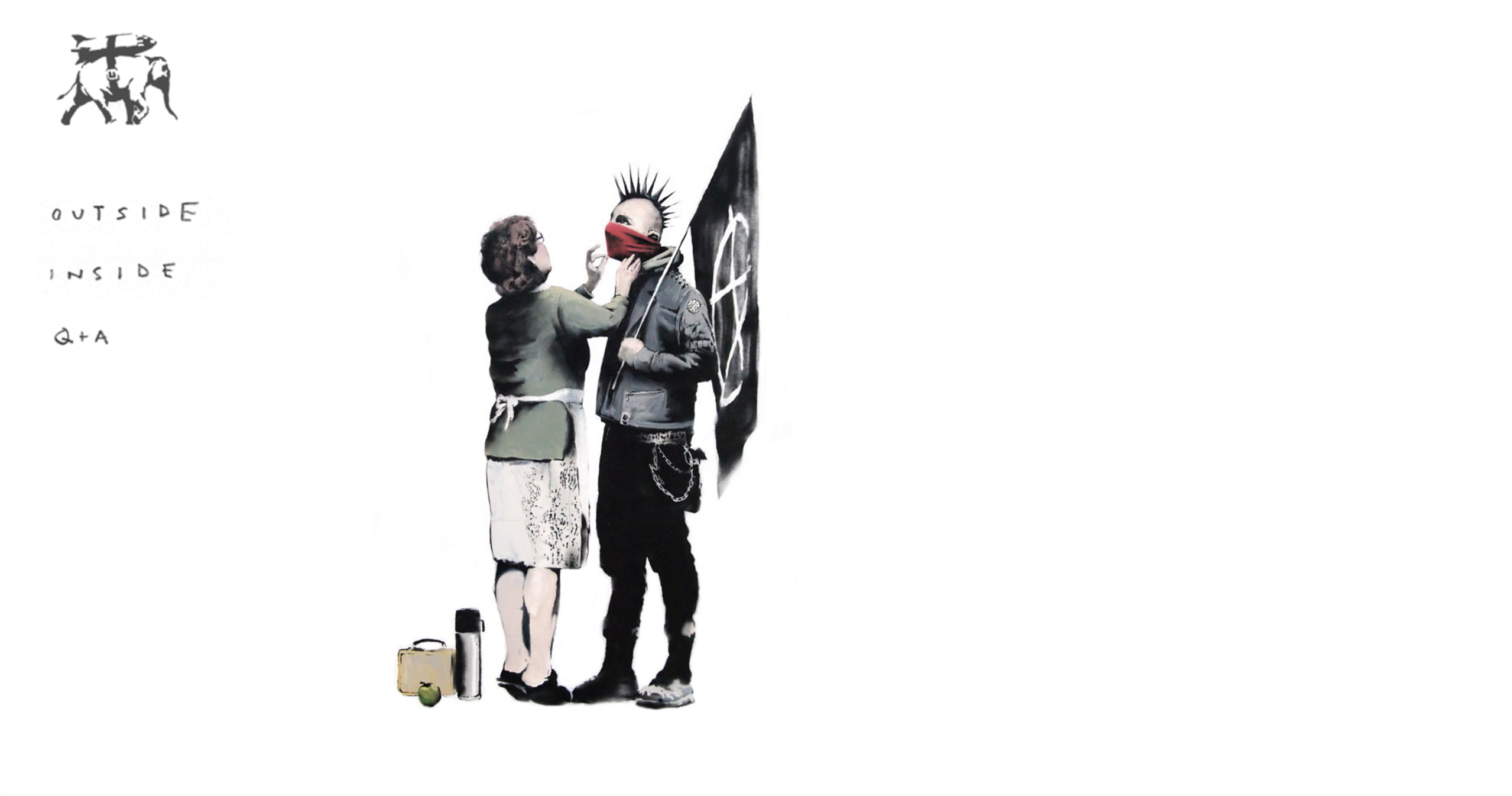
8. Damien Hirst
There is a lot of controversy surrounding this artist, and some might say that he has a knack for stirring up trouble and media attention. Nevertheless, no one can deny his impact on contemporary art. He became famous during the '90s as the most promising member of the Young British Artists collective.
Hirst is a conceptual artist most famous for his scandalous installations. The most prominent theme in Hirst's work is death. It doesn't surprise that he gained fame with his controversial exhibition where he submerged dead animals in tanks full of formaldehyde. This work and similar installations divided both the public's and critics' opinions. Along with frequent lawsuits that follow him around, he is the enfant terrible of the modern art movement.
Whether you condemn him or support his art, one thing is sure – Damien Hirst will not leave you indifferent.
What to Learn from this Art Portfolio Website
His website design is minimalistic because his artist portfolio is full of rich and shocking imagery that doesn't need anything else to distract the viewer's eye. Moreover, you can read the latest news about the artist and his new endeavors, or you can dig through his extensive work.
We like his clean website layout with a hamburger menu and search field in the navigation bar. Many beginners might build an art portfolio without thinking about the crucial pages all websites have to include. It is not the case with Hirst's website. You will find the mandatory Privacy and Terms & Conditions pages that all professional websites should display in the footer.
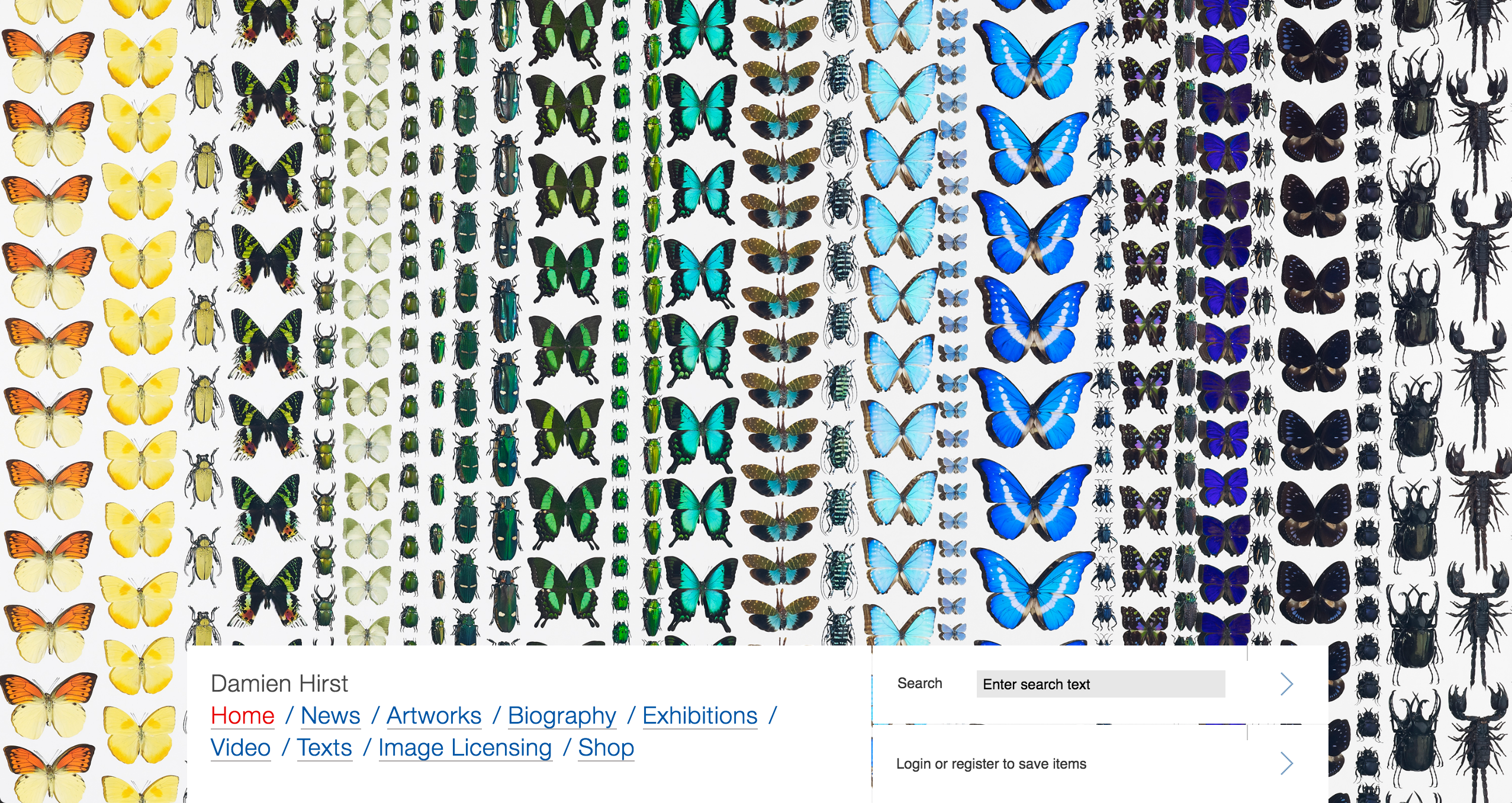
9. Gabriele Beveridge
Hong Kong-born but now a London-based artist, Gabriele is still a rising star. Her signature work includes installations and sculptures that combine old magazine photos and various objects juxtaposed with the photos. She combines photos of smiling models and crude objects made of wood, glass, marble, or sand, creating contrast and a feeling of displacement.
What to Learn from this Online Artist Portfolio
Her online artist portfolio is minimalistic and only focused on her work, without unnecessary distractions or additional information that could divert the viewers' attention.
Nonetheless, we would have liked to see some social icons to make her works easier to showcase by fans in their social media networks. However, Gabriele is a fan of contrasts – which is a powerful way to create a memorable brand. As intricate as her works are, as simple her website design is.
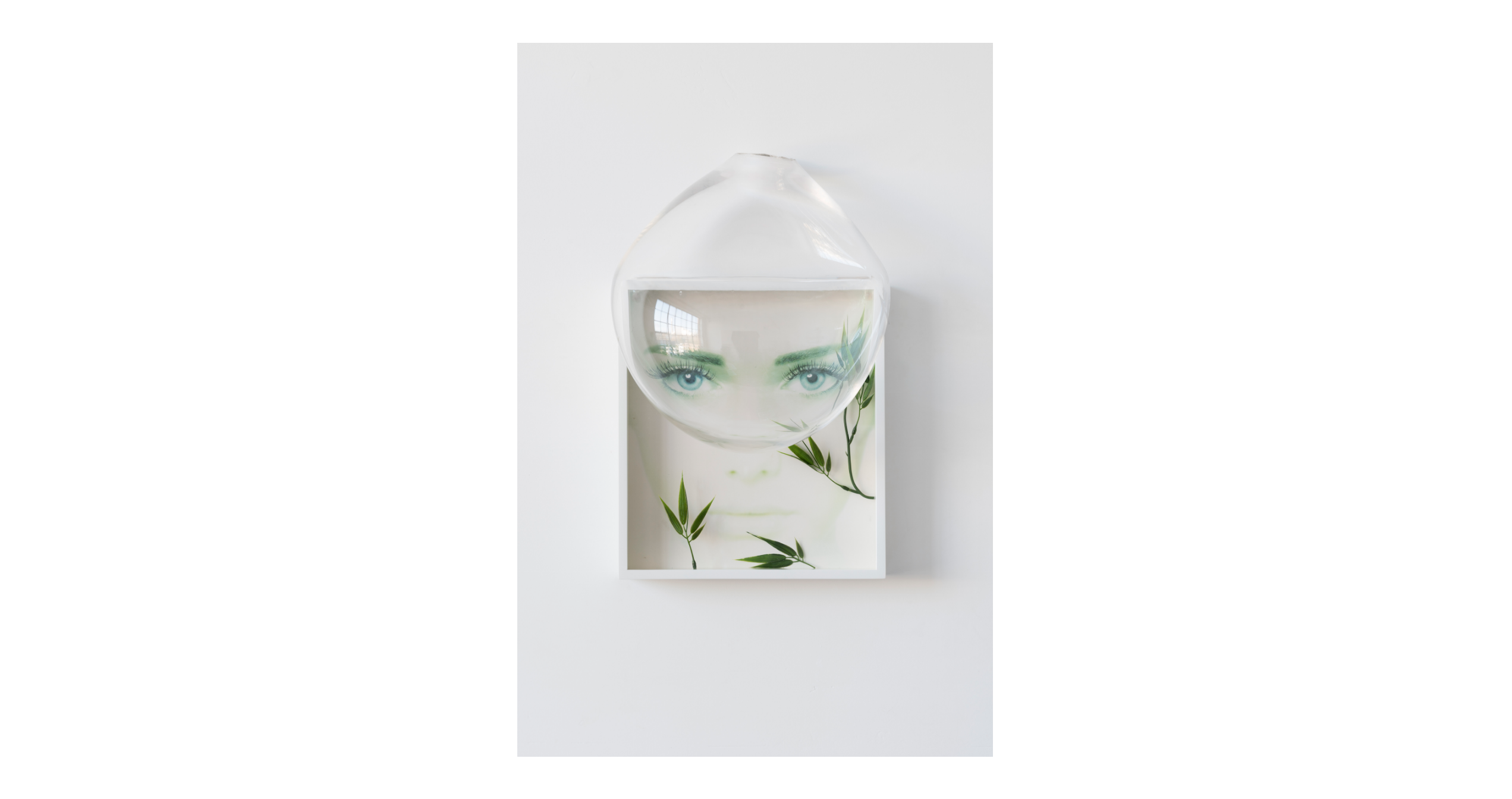
10. Aakash Nihalani
Aakash Nihalani is a US-based street artist whose specific techniques and bright-colored tapes set him apart. His work ranges from simple cube illusions to complex patterns. The repetition of geometric objects, such as rectangles and squares, leads to 3D images, which will leave you breathless.
The tape technique isn't the only thing that makes Aakash's work unique; the interaction between the conventional shapes has the same effect because it produces very unconventional art, both indoors and outdoors.
What to Learn from this Art Portfolio
His portfolio is simple, clean, and very well organized, which is why the viewer's focus remains on the art itself. The white background and divided sections of selected work make the website very easy to navigate. You can easily find all the needed information regarding the exhibitions and contact details in the Info part.
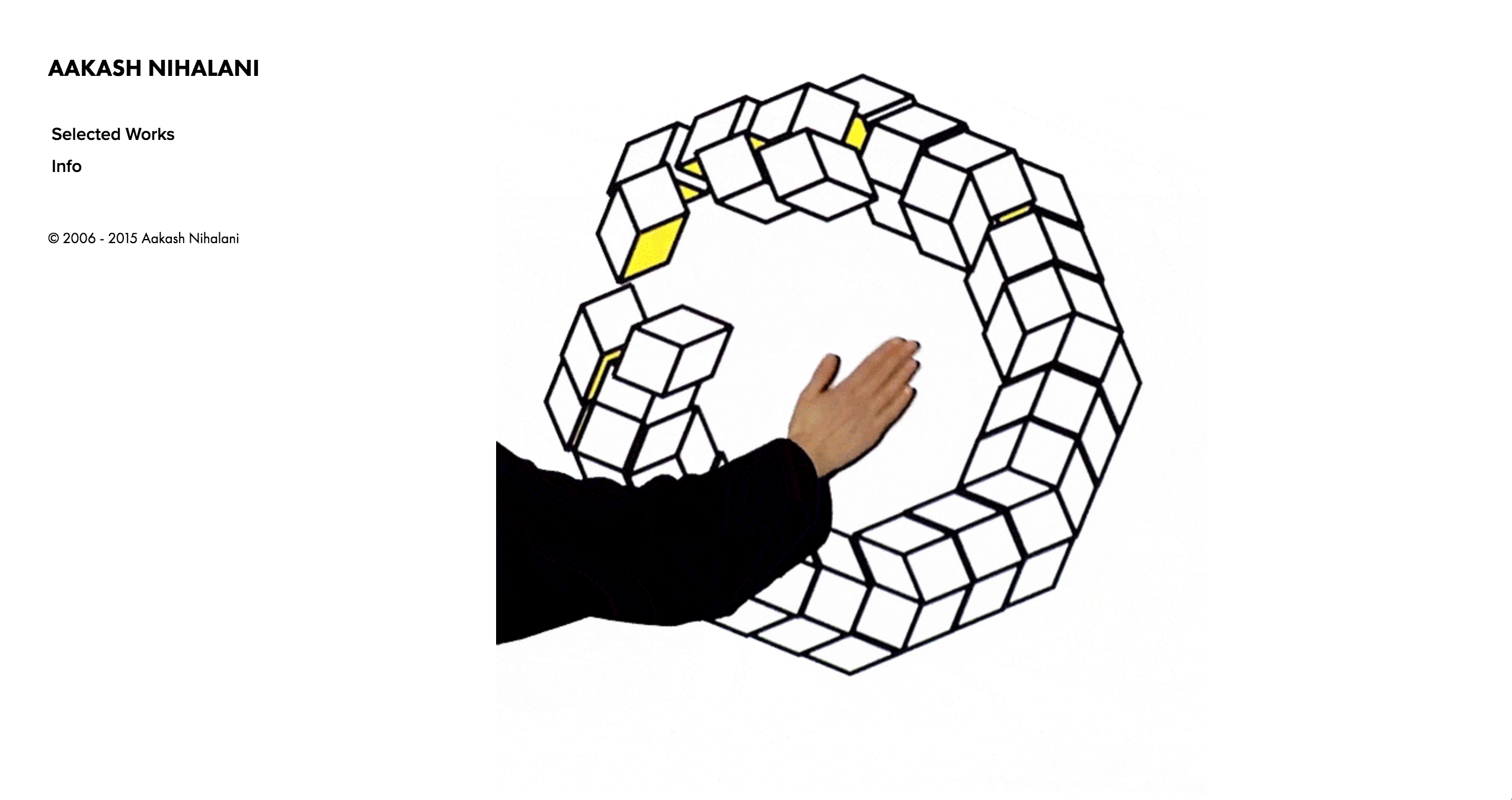
11. Tore Rinkveld
Next on our list of brilliant art portfolio examples is Tore Rinkveld's website. Better known as EVOL, he is a German street artist who transforms walls or electric boxes into miniature life-like tower blocks. Not only will his artistic skills make it hard for you to tell if the photos you're looking at are actual buildings, but they will also make you look at your surroundings from a completely different perspective. EVOL draws the viewers’ attention to everyday details that we usually take for granted: for example, shadow casts and balcony lights.
What to Learn from this Portfolio Website
The essential key to making EVOL's art so fascinating is the perfect camouflage. EVOL's portfolio with white background and Pinterest-like organized works is neat and attractive. The main focus remains on the art.
Since all the works are organized in different sections, viewers can easily find pieces of art they are interested in: studio works, installations, interventions, or editions. The information regarding contact, publications, or CV is visible, along with the Facebook and Instagram buttons that will lead you to EVOL's official pages.
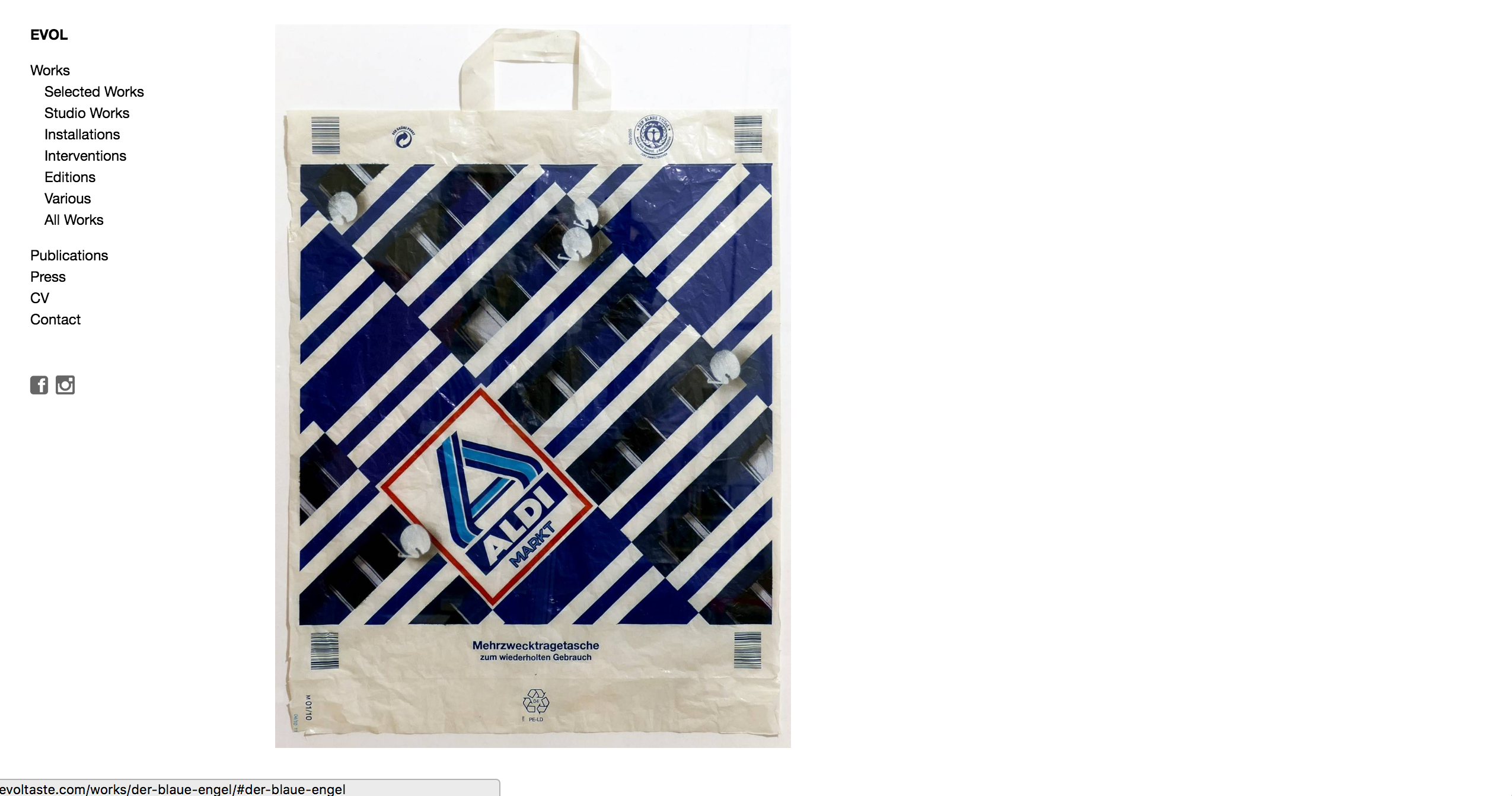
12. Alexandre Farto
Alexandre Farto, aka Vhils, is a young street artist who gained special recognition after his work was displayed right next to the famous Banksy at the Cans Festival in London 2008.
The techniques he employs set him apart from other contemporary artists: explosives, etching, and burning of the wall's surfaces. This way, he adds character to his art and a much deeper meaning to his messages. The effect wouldn't be the same if he used to paint. Not only has this unique approach been recognized around the world, but it has also been hailed as one of the most compelling and original as of late.
What to Learn from this Artist Portfolio
The first thing you notice on Vhil's online portfolio is its clear layout and well-organized structure. They make the website look professional and be very easy to use. The News section gets regular updates, which makes the website much more than a portfolio! It seems that Vhil (or the webmasters of his online asset) knows plenty about content writing, SEO strategies, and what makes engaged audiences tick.
We also like that Vhil's art website also features an online shop, where you can find his art for sale. Moreover, the Newsletter page in the navigation bar makes it easy for fans to subscribe to the artist's news.
It seems that Vhil is versed in the art of website design, as his online portfolio does not lack social icons leading to his Instagram, Twitter, Facebook, YouTube, and Weibo pages and accounts.

13. Jean René
Jean René, whose pseudonym JR is famous worldwide, is an artist who developed a unique art technique that combines photography and graffiti art. This technique is the reason he nicknamed himself "photograffeur."
By fly-posting large photographic images in the streets, which he calls "the largest art gallery in the world," JR creates specific work that combines art and action, dealing with concepts such as freedom and limits.
What to Learn from this Online Art Portfolio
Jean's online portfolio is one of the best artist websites we have seen in quite a while. It is an excellent example of a creative yet very well-organized online asset. The background consists of a slideshow of his works. Moreover, he divided and organized his art pieces into different sections and built a homepage worthy of a professional business website.
We also love the hamburger menu, the search bar, and the website's multilingual options (English & French).
A clean and UX-friendly layout speaks volumes about the artist's respect for the fan base. The homepage features the latest news about JR's exhibitions, projects, activities, and work. You will find an online shop at the bottom of the homepage, together with a visible section dedicated to newsletter subscriptions, contact, and social media (complete with buttons).
The Get Involved section allows the readers to find information regarding volunteering, becoming a part of JR's team and giving suggestions.

14. Ed Ruscha
Ed Ruscha is a pioneer of the Los Angeles art scene in the 1960s. Since then, he has become one of the most iconic American artists of all time. After moving from Oklahoma to Los Angeles, he intended to become a commercial painter. Ruscha found inspiration in the world around him and inspired in his turn many prominent artists. His work gained more and more pop influences and sensibilities, eventually becoming synonymous with the pop art movement.
Ruscha's art ranges from paintings and drawings to photographs, print work, books, and films. He is famous for using unusual materials such as real blood and avoiding pop-culture clichés, among other things.
What to Learn from this Artist's Portfolio
You can see the pop culture influence even in his portfolio. His website is very clear and directs the viewer's attention to Ruscha's masterpieces. His work and the missing pieces appear in separate sections, making navigation through the site very fast. The News section is updated with all information regarding Ruscha's current exhibitions, while the About page features a brief biography.
We like that the website's architecture and navigation contain a Terms & Conditions page in the footer. You will find a Contact page, a search bar, and a Books page displaying all the paintings catalogs available for sale in the header.
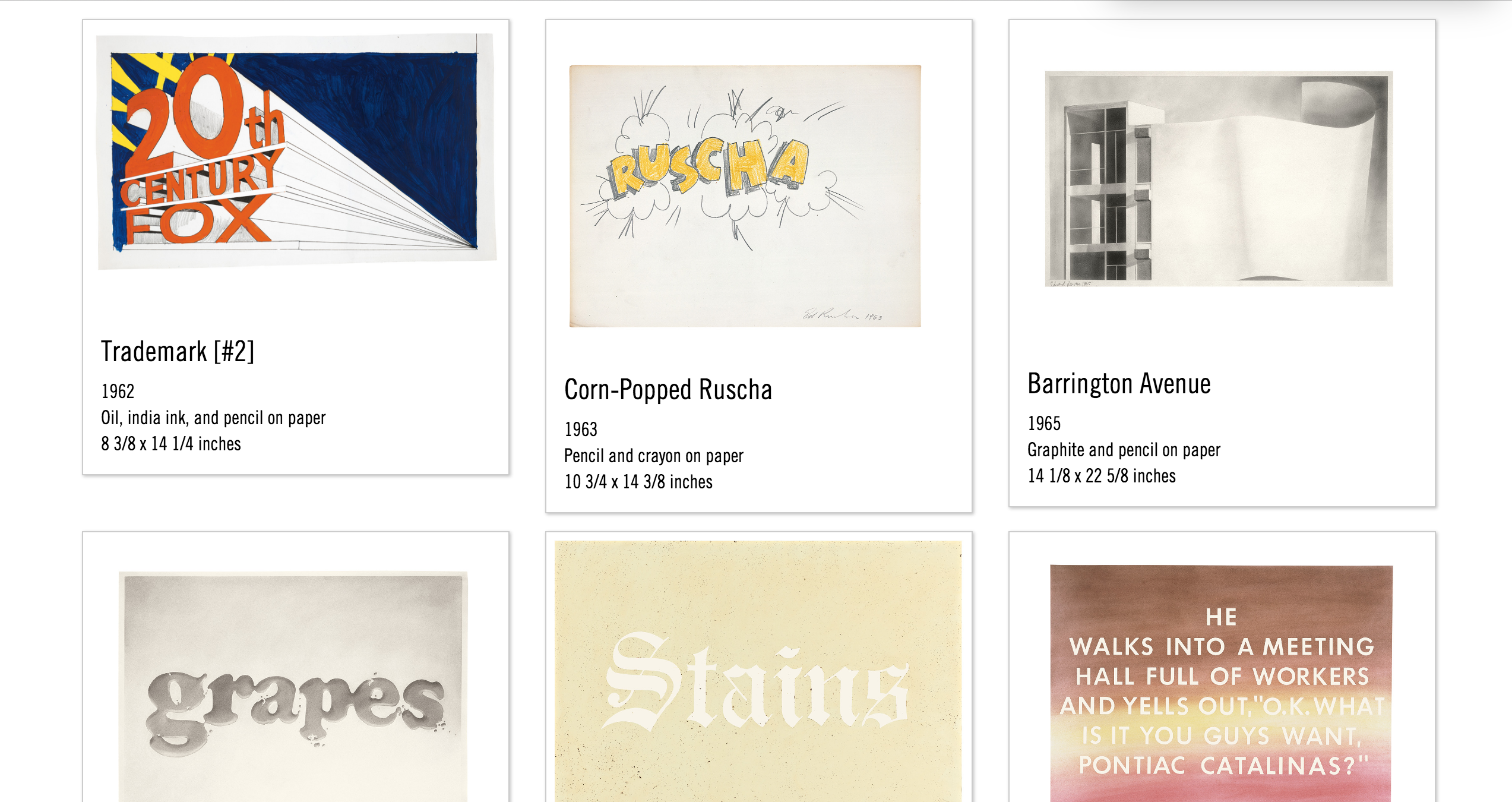
15. Richard Prince
Richard Prince is a well-known photographer and painter whose work has always been influenced by the process of appropriation. Prince's works are those kinds of masterpieces that make the viewers think twice about the meaning of the original piece since they always deliver a much deeper message.
His series New Portraits represents a so-called "new method of artistic appropriation" based on the social media phenomenon, specifically Instagram. Using provocative selfies in his Instagram-inspired series, Prince contemplates the way people present themselves to others in the "social media world."
What to Learn from this Art Portfolio
Prince's website is a perfect example of a well-organized yet creative portfolio. Divided groups of different works, from paintings to sculptures, match the neutral background perfectly. The Writings section is full of exciting and emotional chapters. It is pretty unusual to find such blog pieces in other artists' portfolios, but here you have an example of how to take your branding efforts up a notch or two.
Prince understands the intrinsic benefits of blogging, mainly because his essays and stories are far from the run-of-the-mill blog posts of our times.
Even the contact information section on the website is very creative. All the contact and social media icons are present in the Birdtalk section, along with an interesting summary of Prince's thoughts.
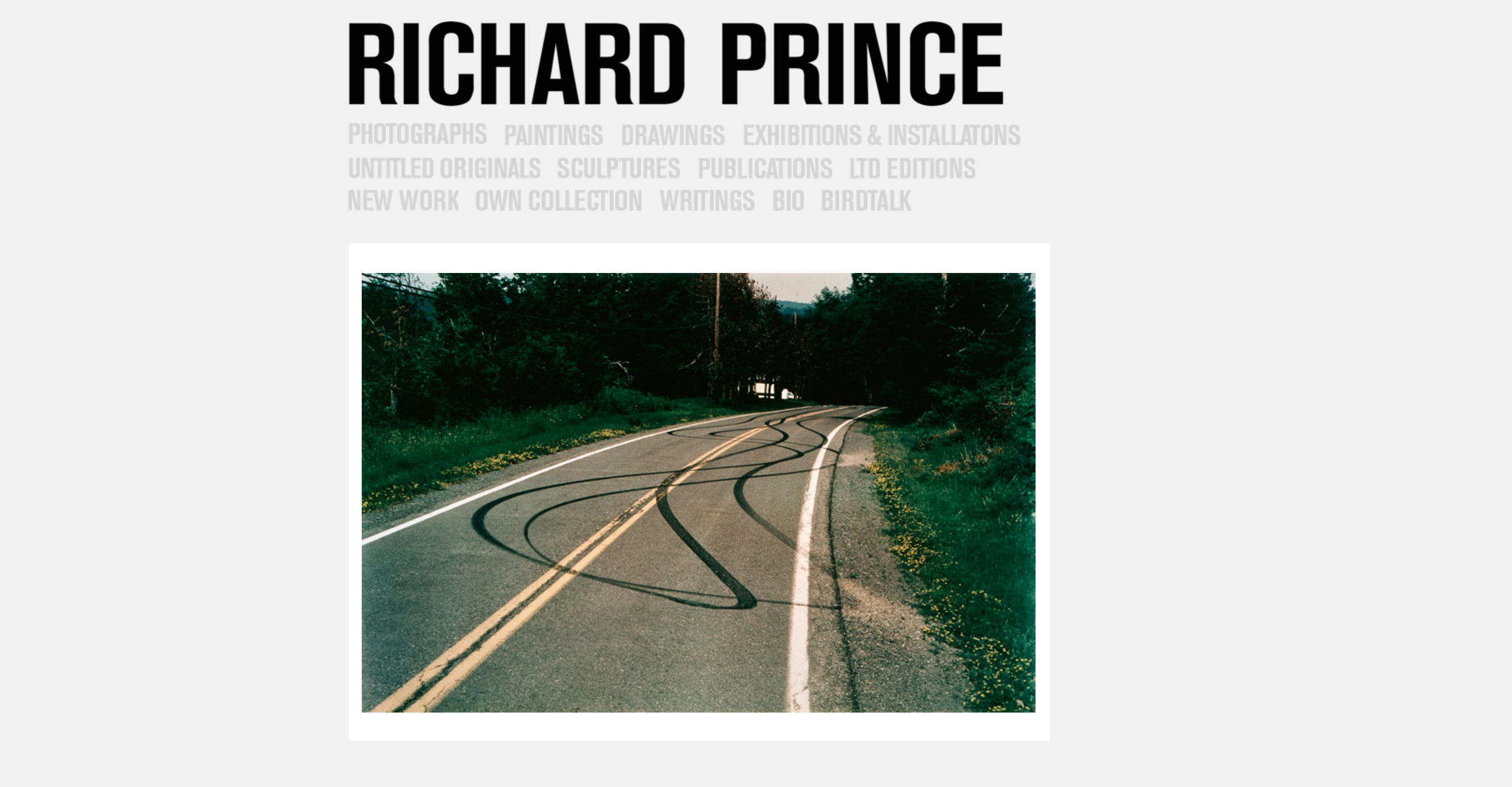
16. Robert Indiana
Robert Indiana, who calls himself the "Painter of the American landscape," is an American pop artist most famous for his iconic "LOVE" paintings and sculptures.
He finds inspiration in commercial signs, such as the "Yield" traffic sign and the Phillips 66 gas station logo, re-arranges them, and turns them into remarkable pieces of art. The LOVE sign mentioned above became a postage stamp in 1973.
What to Learn from this Artist' Online Portfolio
Robert's portfolio represents an organized website with clear sections and categories, so the navigation is smooth. In the Life section, the viewers can read about some interesting facts from his life and career, accompanied by his childhood photos. If you wish to contact Robert or someone from his team, make sure you read the Terms & Conditions page since many frequently asked questions have already been briefly answered.
As website design goes, we enjoy the combination of black & white background and the colored categories. It is hard to pull off such a feat in our current web design trends, but this website does it successfully. If you are unsure about the color schemes of your future art portfolio, check out these website templates and find a layout that serves your artistic views, needs, and audience expectations the best!
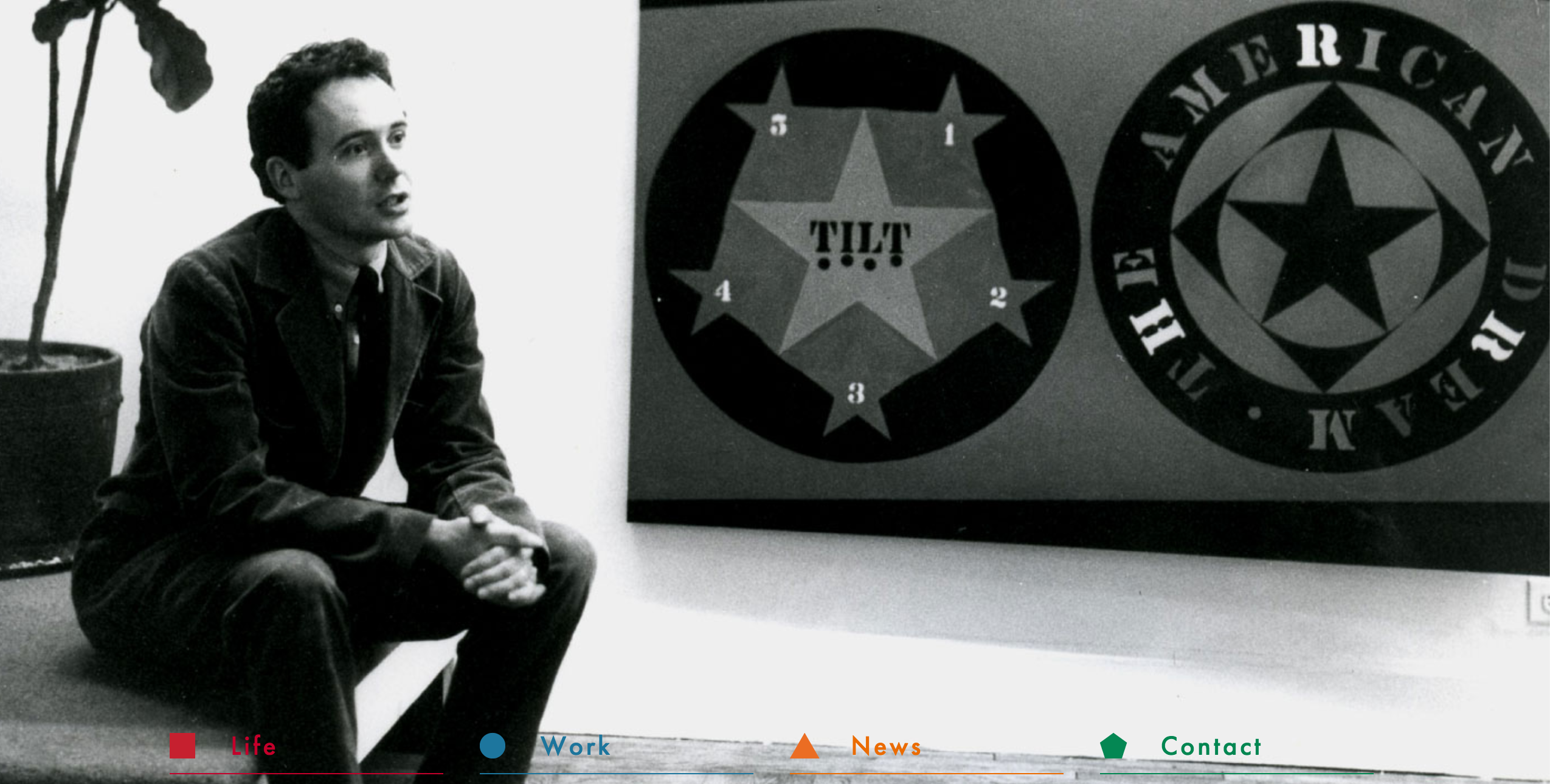
17. Glenn Brown
Glenn Brown, a British artist, started his career with reproductions of famous artists such as Salvador Dali, Rembrandt van Rijn, and Frank Auerbach. Still, he changed the images' colors, objects' position, sizes, etc.
Brown's work is unique because he uses thin brushstrokes to create an illusion of flat surfaces. Art lovers could admire his works displayed in major museums such as Kunsthistorisches Museum in Vienna and Centre Pompidou in Paris.
What to Learn from this Artist's Website
As for the art portfolio, Brown's is one of the best artist websites blessing the Internet. You have plenty to learn from it, as it shows both creativity and simplicity. Depending on the work you are searching for – paintings, drawings, sculptures, or special projects, you can easily find them in the Artwork section. All other information regarding exhibitions, Brown himself, or videos about his work, are easy to navigate via the categories displayed at the top of the page.
We love the homepage in particular. The section above the fold represents a refined slideshow of the artist's most important works. As you scroll down, you see beautifully arranged snippets of exhibitions and art events. The neutral background makes the artwork stand out.
The Video section is what we would call a strike of marketing genius, as the page displays video pieces of Brown talking about art, discussing art-related matters with specialists, offering interviews and presentations, etc. Watching these videos, art lovers can learn more about the artist himself and get in-depth insights regarding his works, views, values, techniques, and so on.
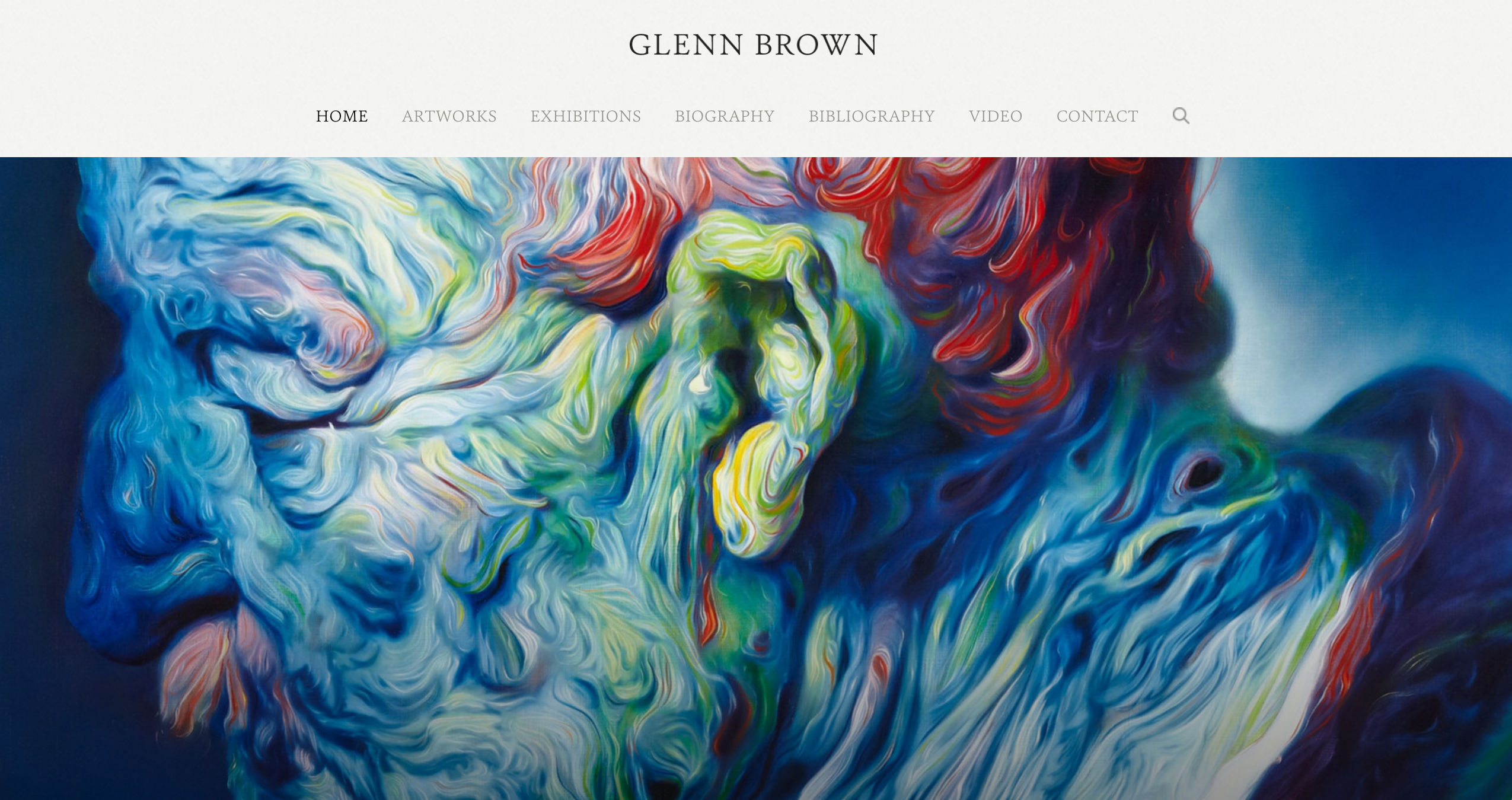
18. Antony Gormley
Antony Gormley, a British artist born in London, is widely respected for his installations, sculptures, and public artwork, representing a relation of the human body and space. His outdoor, large installations, such as Another Place and Angel of the North, are famous among artists worldwide. Gormley's work was rewarded plenty of times, and he was even made an Officer of the British Empire and a knight in the New Year's Honours list in 2014.
What to Learn from this Art Website
The online portfolio of this talented artist shows simplicity and perfect systematization of all his work in categories such as Shows, Projects, Sculptures, and a few other sections. You can find buttons for more information or links associated with the works at the bottom of each image.
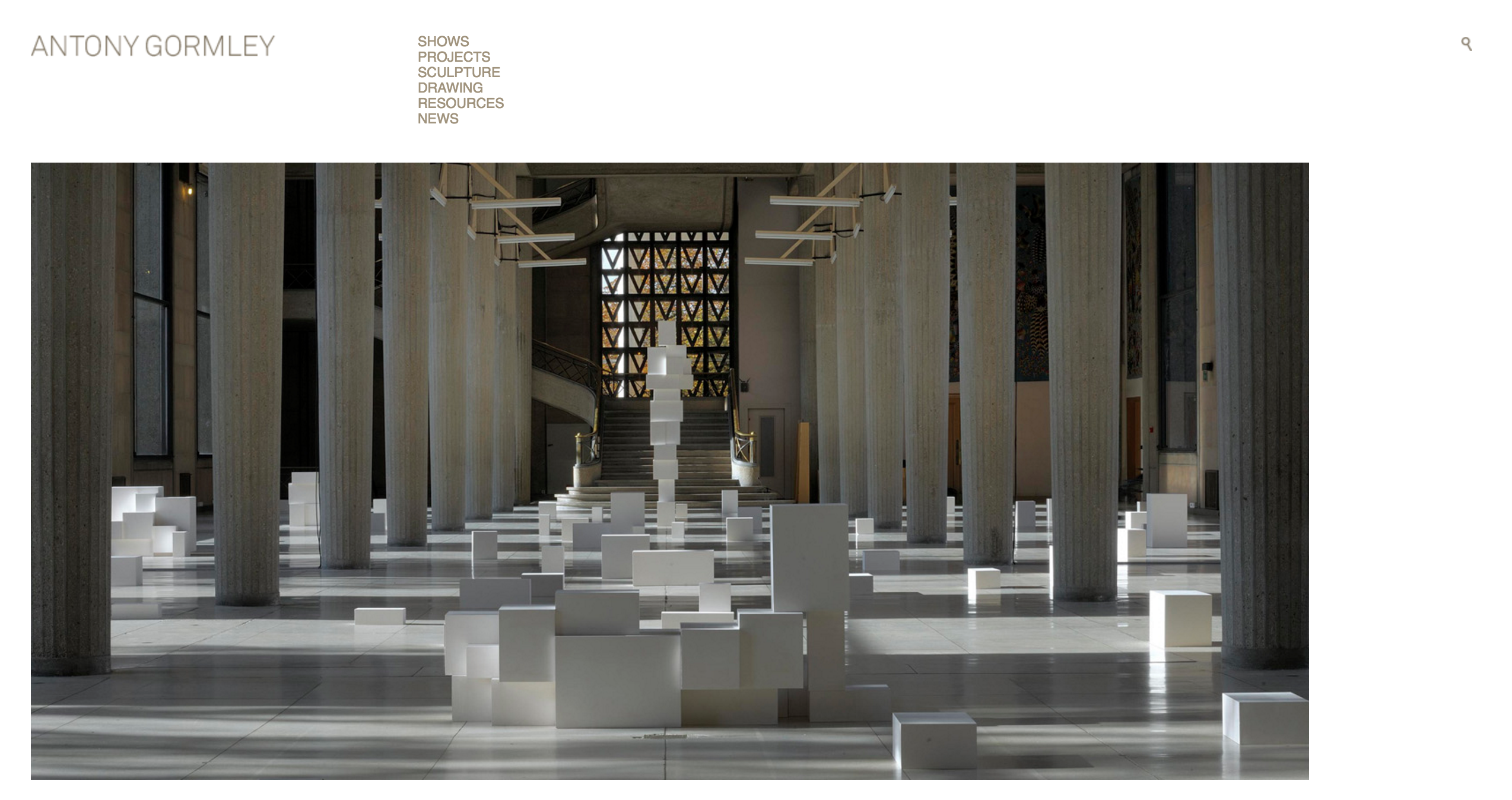
19. Tracey Emin
Next on our list of brilliant artist portfolio examples is Tracey Emin's website. She is a notable member of the Young British Artists organization, whose art includes paintings, drawings and sculptures, and film, embroidery, and unusual installations. All of her work reveals very personal and intimate details, presented in a narcissistic sort of way. Her provocative artistic expression resulted in a nomination for the Turner Prize in 1999. Emin's installation "My Bed" gained a lot of attention even though she didn't win the prize.
What to Learn from this Artist's Website
Although Emin's work is quite controversial, her website is straightforward and clean. The viewers can easily navigate through sections while searching for Emin's artwork, biography, or news regarding exhibitions. The "filter by year" part is another excellent way to separate all of the work and make it easy to find. The contrast between colors on the white background makes the website very appealing to the viewers, especially those who spend a lot of time on their computers.
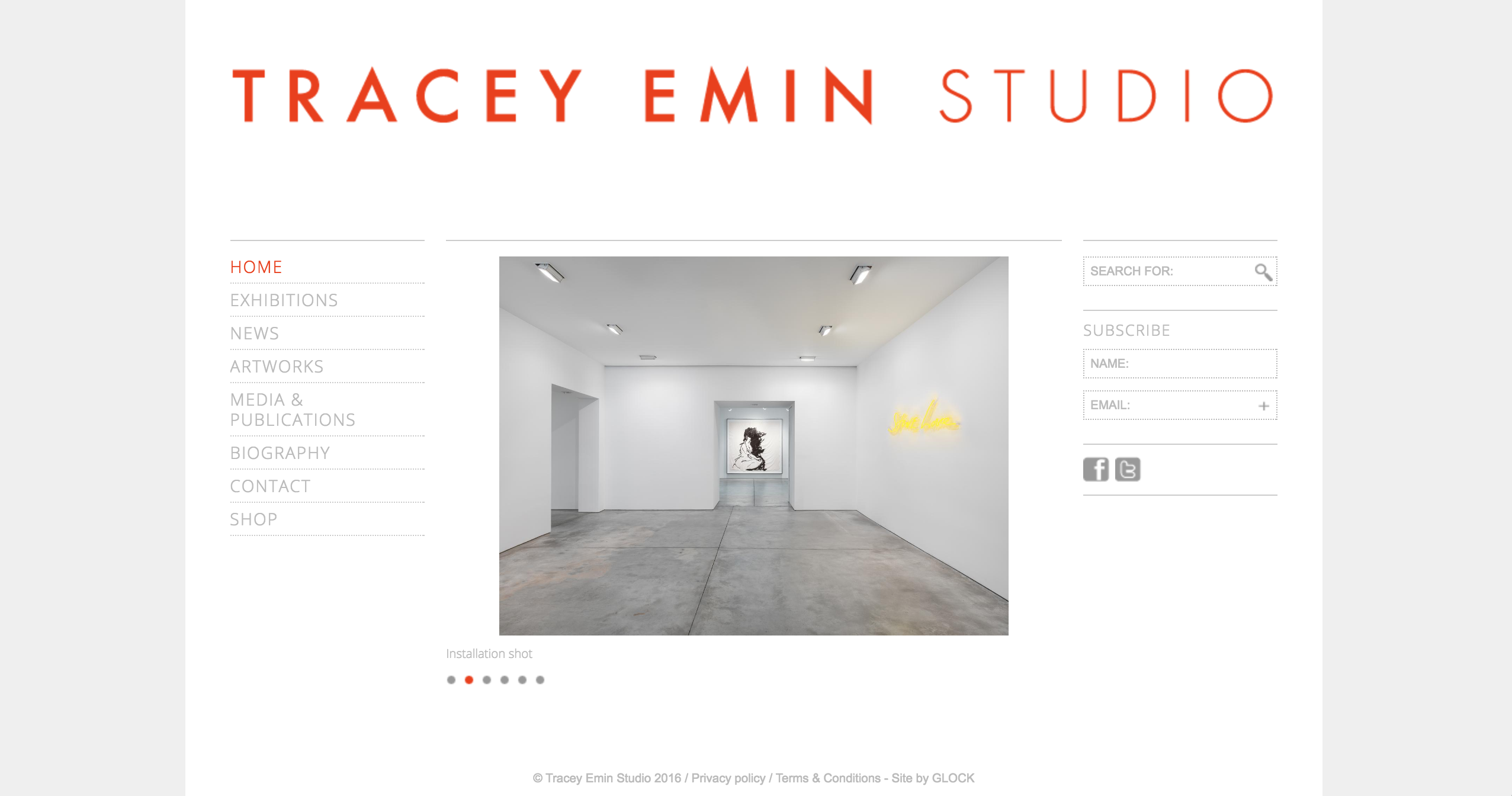
20. Kurt Wenner
Kurt Wenner is an American artist most respected for his pavement illustrations. He creates magnificent 3D illusions, sculptures, large-scale oil paintings, ceramic murals, etc. A true mentor for future generations, he shares his knowledge by teaching talented students the secrets behind his masterpieces. Wenner's 3D illusions are among the most photographed outdoor art, especially because many of them faded or disappeared. Wenner's online portfolio also reflects his creativity and his attention to detail.
What to Learn from this Online Art Portfolio
Last on our list of extraordinary art portfolio examples, we have a website worthy of awards. This online asset is rich in exciting content since there is a regularly updated blog section. The website designers who created this website did a fantastic job with its architecture, visuals, and content structure.
In the Video and Speaking & Workshops part, you can enjoy video segments, documentaries, and other helpful information about this great artist and his work. The online gallery is very similar to a real-life one, which is another reason why we chose kurtwenner.com to be a great inspiration when creating an online art portfolio.
The navigation bar contains an online shop, a commission section dedicated to clients, a Contact Us page, social media icons, and more. If you explore the homepage carefully, you will find a link to a page called Fun Facts about Kurt Wenner. Forget about your garden variety About page; this one is truly inspiring for any artist who wants to win the personal branding game.
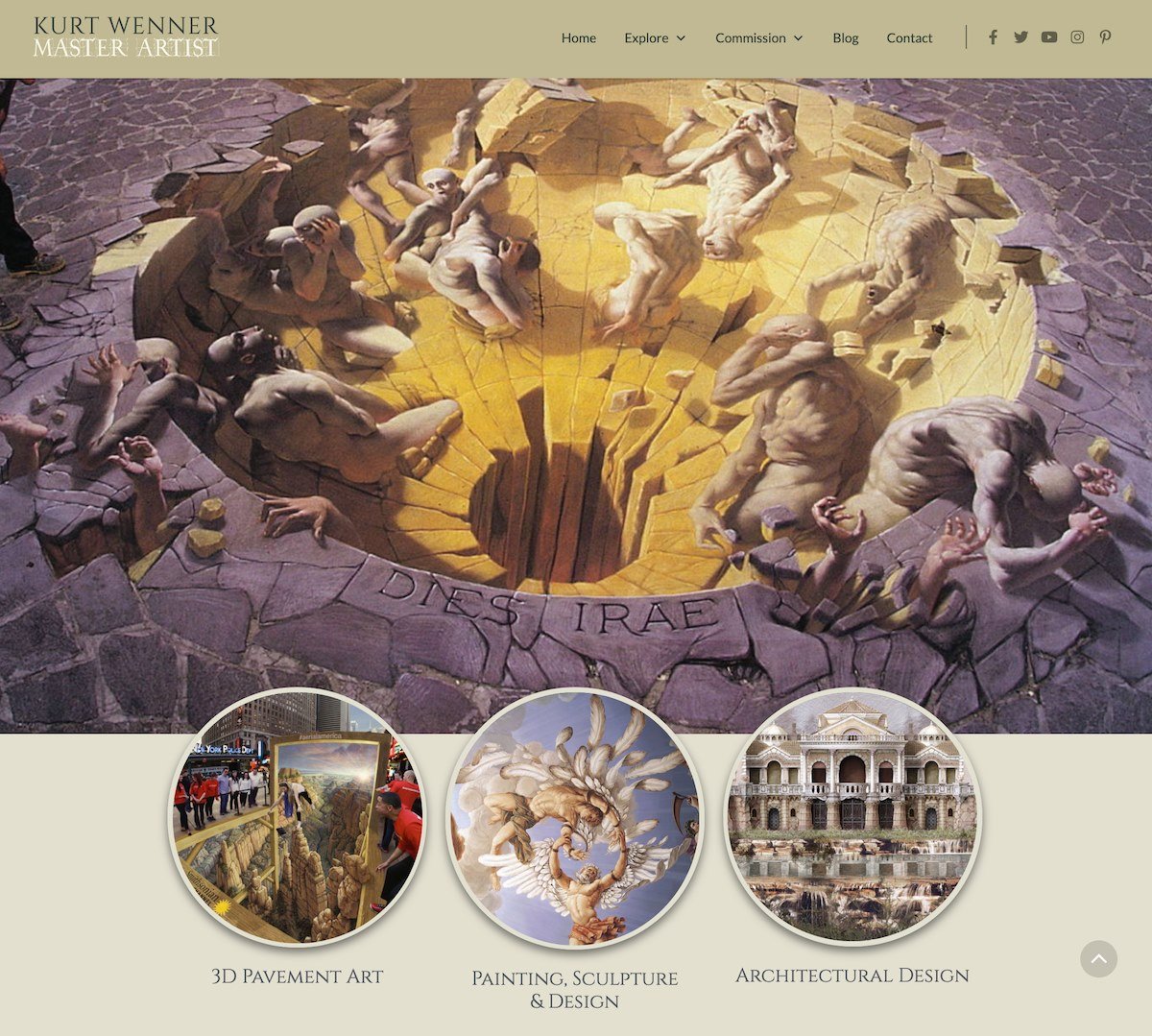
How to Make a Portfolio for Your Art?
As you could see, the best artist websites present on this list are more than just online exhibitions of your work. They are branding and marketing tools, and you should take them seriously. We understand that an artist's primary focus is on the art, but it doesn't mean you should neglect your online presence. As marketing strategies are in matter, having an online portfolio for your art these days means reaching new audiences and keeping fans close almost effortlessly.
After all, managing an art portfolio allows you to sell your pieces, build a name for yourself, gain exposure, commissions, and even the attention of those who can help you rise to fame. These days, art websites are no longer art galleries but portals through which art lovers can engage in a meaningful manner with the artists they love and support.
Let's see a few tips, ideas, and suggestions on how to make an artist portfolio stand out from the crowd and gain a following. At a minimum, your art portfolio website should contain the following elements:
-
A visually stunning, responsive, and versatile website template that allows you to display your works and add an online shop if you have pieces for sale;
-
Among the most important pages that your art portfolio should not miss are the Privacy Policy page, Terms & Conditions, a page discussing author's rights and work licensing, a Contact page, and a creative, engaging About Me page, a custom domain name and web hosting. If you build your site with Ucraft, we offer free hosting, the possibility for you to purchase a domain name, a free SSL certificate for protection, and more;
-
Your art portfolio should also contain a blog section. Do not mistake this for an art blog, however. The blog on your art website is your way to tell your story, share your thoughts & views, gain a following, and make the entire user experience with your website insightful, meaningful, and trustworthy.
-
Add a section dedicated to your exhibitions besides the curated collection of your works;
-
You should also display a section focused on certifications and awards if you have any.
-
We also appreciate the art portfolios where search bars are present for the users' smoother navigation and interaction with the website;
-
Make it easy for fans to learn how other people relate to your work. A Testimonials & Reviews page is an excellent way to make the best out of user-generated content and build a relationship of trust with your fans, supporters, investors, etc.;
-
In case you want to reach an international audience, we recommend you consider a multilingual website. In this regard, our website builder is one of your best choices;
-
To keep in touch with your audience, make sure your art portfolio features a Newsletter section so you can send your fans news, press releases, new works announcements, exhibition and event dates, and more!
One of the most critical aspects of building an art portfolio is choosing the right template with a host of valuable features and website integrations. You should check out our website builder, taking advantage of our free trial to create a clean, user-friendly, mobile responsive, and efficient online art portfolio with all the trimmings!
Final Thoughts on Building Artist Portfolios
We hope these creative art portfolio examples gave you some ideas on setting up your platform and attracting a loyal audience. You can check out some of the templates Ucraft offers and create a stunning website to showcase all of your work, for starters. Upload your content, drag and drop blocks to create your desired layout, and voila! You now have an official art portfolio website! Good luck!

